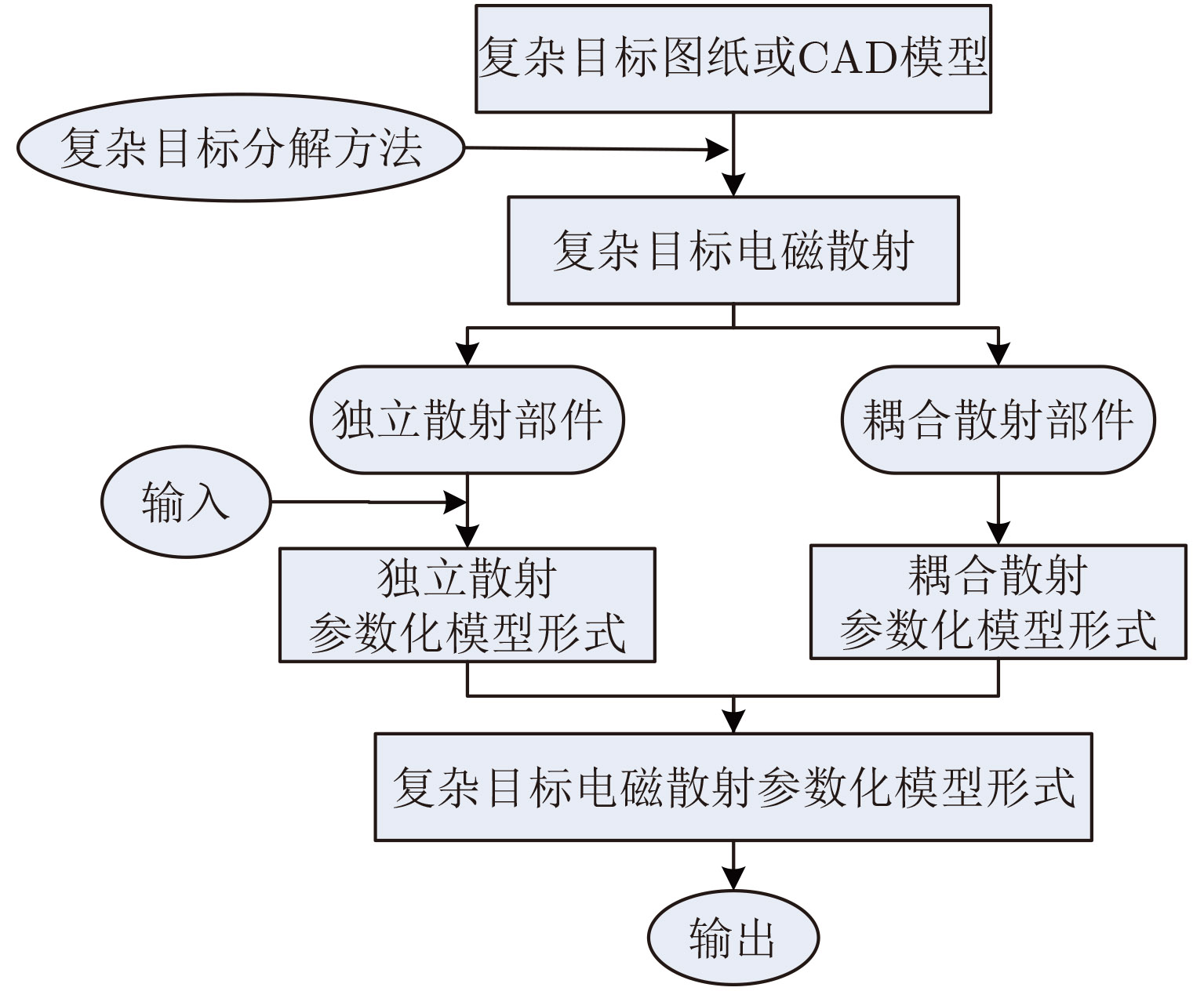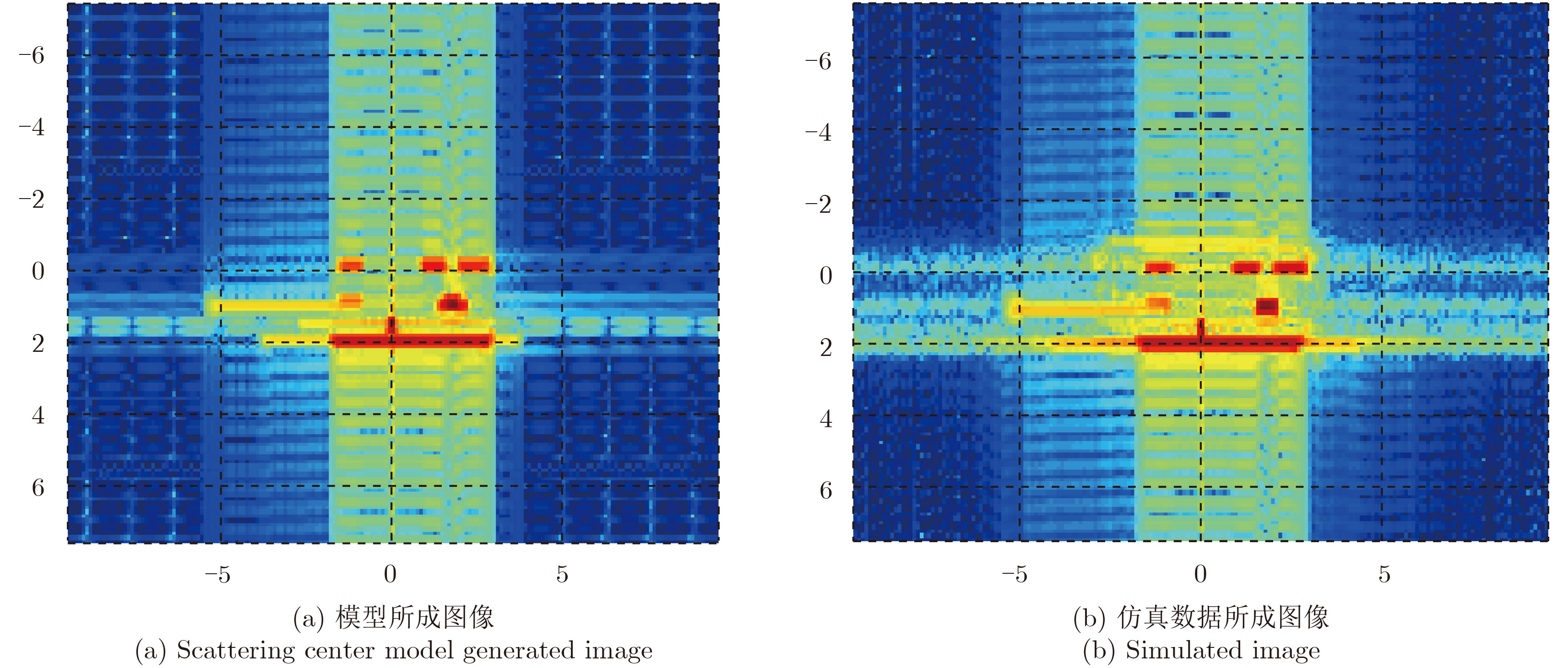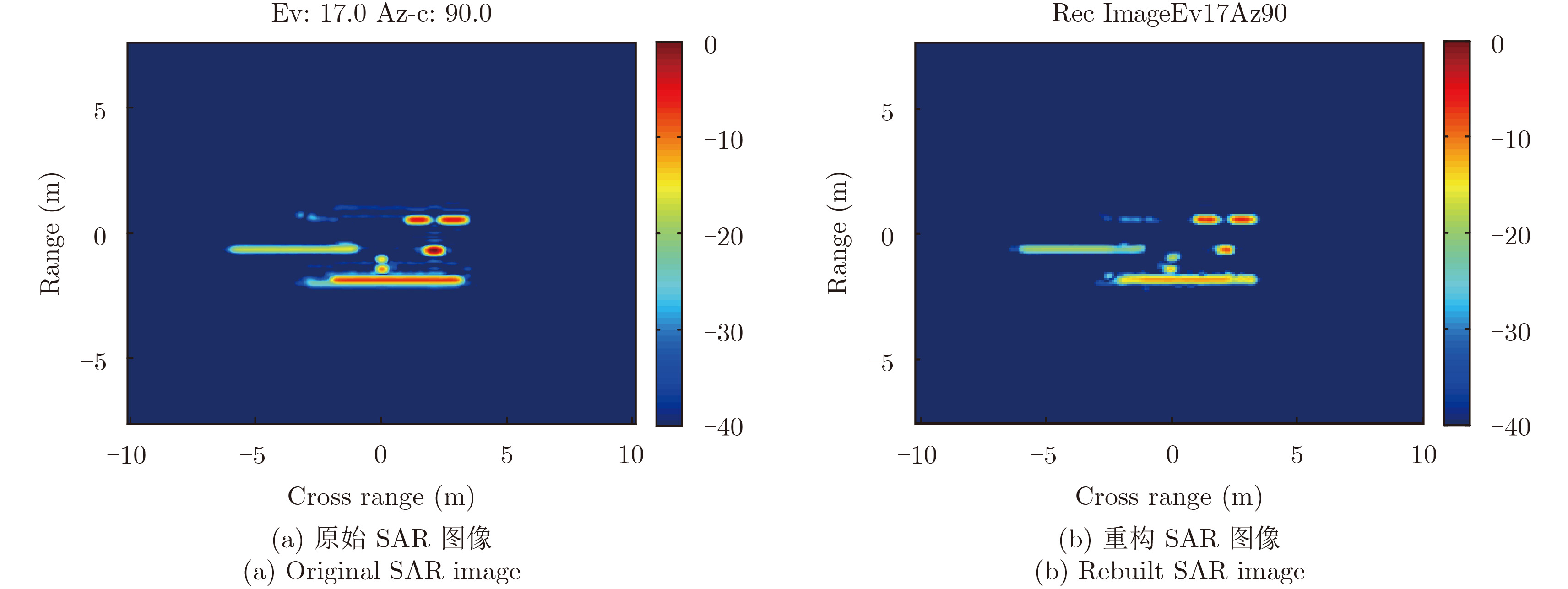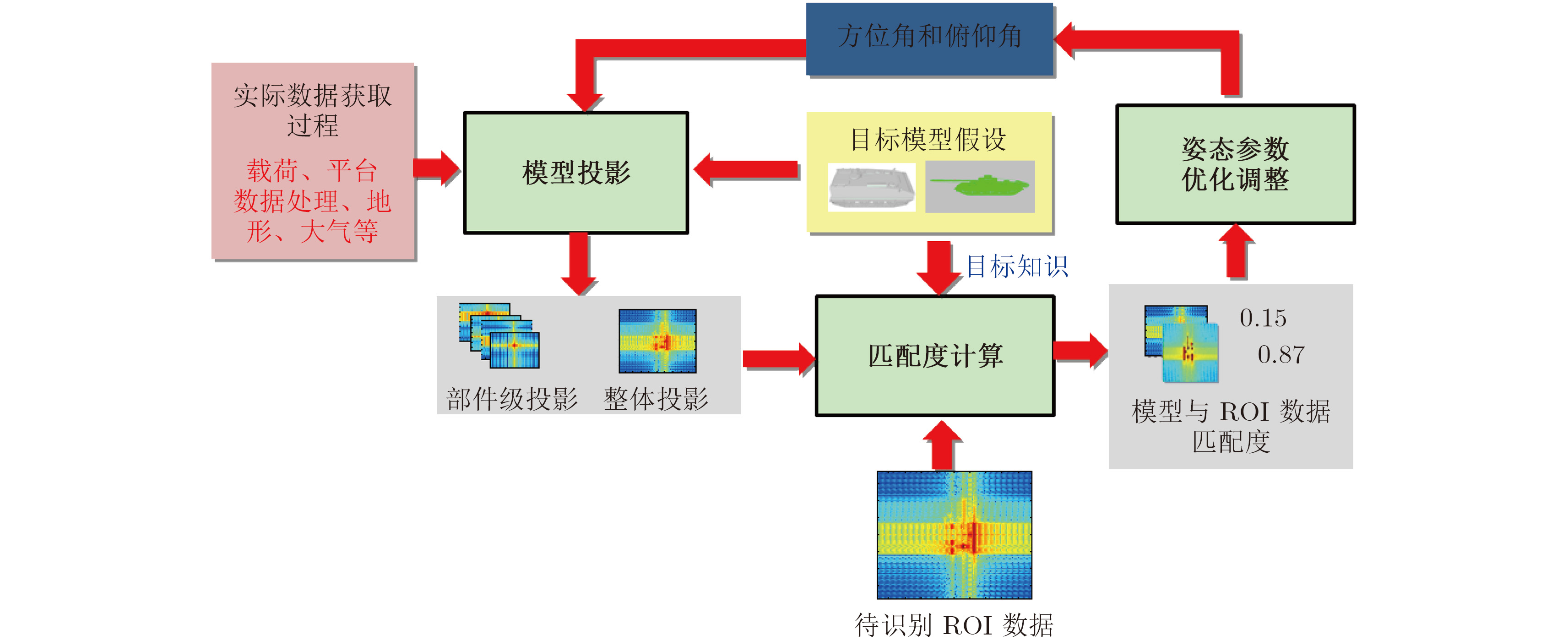| [1] |
张澄波. 综合孔径雷达—原理、系统分析与应用[M]. 北京: 科学出版社, 1989.
Zhang Cheng-bo. Synthetic Aperture Radar Emdash the Principle, System Analysis and Application[M]. Beijing: Science Press, 1989.
|
| [2] |
黄培康, 殷红成, 许小剑. 雷达目标特性[M]. 北京: 电子工业出版社, 2005.
Huang Pei-kang, Yin Hong-cheng, and Xu Xiao-jian. Radar Target Characteristics[M]. Beijing: Publishing House of Electronics Industry, 2006.
|
| [3] |
Wehner D R. High-Resolution Radar[M]. Norwood, MA: Artech House Inc., 1987.
|
| [4] |
Oliver C, Quegan S, Ding Chi-biao, et al. Understanding Synthetic Aperture Radar Images[M]. Beijing: Publishing House of Electronics Industry, 2009.
|
| [5] |
El-Darymli K, Gill E W, McGuire P, et al. Automatic target recognition in synthetic aperture radar imagery: A state-of-the-art review[J]. IEEE Access, 2016, 4: 6014–6058. doi: 10.1109/ACCESS.2016.2611492 |
| [6] |
Novak L M, Owirka G J, Brower W S, et al. The automatic target-recognition system in SAIP[J].The Lincoln Laboratory Journal, 1997, 10(2): 187–202.
|
| [7] |
Kreithen D E, Halversen S D, and Owirka G J. Discriminating targets from clutter[J].The Lincoln Laboratory Journal, 1993, 6(1): 25–52.
|
| [8] |
Meth R and Chellappa R. Feature matching and target recognition in synthetic aperture radar imagery[C]. IEEE International Conference on Acoustics, Speech, and Signal Processing, Phoenix, AZ, March 1999: 3333–3336.
|
| [9] |
Nicoli L P and Anagnostopoulos G C. Shape-based recognition of targets in synthetic aperture radar images using elliptical Fourier descriptors[C]. Proc. SPIE 6967, Automatic Target Recognition XVIII, Orlando, FL, April 2008.
|
| [10] |
Liu Xian, Huang Yu-lin, Pei Ji-fang, et al. Sample discriminant analysis for SAR ATR[J]. IEEE Geoscience and Remote Sensing Letters, 2014, 11(12): 2120–2124. doi: 10.1109/LGRS.2014.2321164 |
| [11] |
Park J I, Park S H, and Kim K T. New discrimination features for SAR automatic target recognition[J]. IEEE Geoscience and Remote Sensing Letters, 2013, 10(3): 476–480. doi: 10.1109/LGRS.2012.2210385 |
| [12] |
Huang Yu-lin, Pei Ji-fang, Yang Jian-yu, et al. Neighborhood geometric center scaling embedding for SAR ATR[J]. IEEE Transactions on Aerospace and Electronic Systems, 2014, 50(1): 180–192. doi: 10.1109/TAES.2013.110769 |
| [13] |
Mishra A K. Validation of PCA and LDA for SAR ATR[C]. TENCON 2008-2008 IEEE Region 10 Conference, Hyderabad, Nov. 2008: 1–6.
|
| [14] |
|
| [15] |
Dong Gang-gang and Kuang Gang-yao. Classification on the monogenic scale space: Application to target recognition in SAR image[J]. IEEE Transactions on Image Processing, 2015, 24(8): 2527–2539. doi: 10.1109/TIP.2015.2421440 |
| [16] |
Jones G and Bhanu B. Recognition of articulated and occluded objects[J]. IEEE Transactions on Pattern Analysis and Machine Intelligence, 1999, 21(7): 603–613. doi: 10.1109/34.777371 |
| [17] |
Liu Jun. Model learning with probabilistic networks[D]. [Ph. D. dissertation], George Mason University, 1997.
|
| [18] |
Kottke D P, Fwu J K, and Brown K. Hidden Markov modeling for automatic target recognition[C]. Conference Record of the 31st Asilomar Conference on Signals, Systems and Computers, Pacific Grove, CA, USA, Nov. 1997: 859–863.
|
| [19] |
Sun Yi-jun, Liu Zhi-peng, Todorovic S, et al. Adaptive boosting for SAR automatic target recognition[J]. IEEE Transactions on Aerospace and Electronic Systems, 2007, 43(1): 112–125. doi: 10.1109/TAES.2007.357120 |
| [20] |
Zhao Zhi-qiang, Jiao Li-cheng, Zhao Jia-qi, et al. Discriminant deep belief network for high-resolution SAR image classification[J]. Pattern Recognition, 2017, 61: 686–701. doi: 10.1016/j.patcog.2016.05.028 |
| [21] |
El-Dawlatly S, Osman H, and Shahein H I. Enhanced SVM versus several approaches in SAR target recognition[C]. IEEE International Conference on Computer Engineering and Systems, Cairo, Nov. 2006: 266–270.
|
| [22] |
Thiagarajan J J, Ramamurthy K N, Knee P, et al. Sparse representations for automatic target classification in SAR images[C]. 4th International Symposium on Communications, Control and Signal Processing, Limassol, Mar. 2010: 1–4.
|
| [23] |
Krizhevsky A, Sutskever I, and Hinton G E. ImageNet classification with deep convolutional neural networks[C]. International Conference on Neural Information Processing Systems, Lake Tahoe, Nevada, USA., Dec. 2012: 1097–1105.
|
| [24] |
Ding Jun, Chen Bo, Liu Hong-wei, et al. Convolutional neural network with data augmentation for SAR target recognition[J].IEEE Geoscience and Remote Sensing Letters, 2016, 13(3): 364–368.
|
| [25] |
Du Kang-ning, Deng Yun-kai, Wang R, et al. SAR ATR based on displacement-and rotation-insensitive CNN[J].Remote Sensing Letters, 2016, 7(9): 895–904.
|
| [26] |
Li Xuan, Li Chun-sheng, Wang Peng-bo, et al. SAR ATR based on dividing CNN into CAE and SNN[C]. 2015 IEEE 5th-Asia-Pacific Conference on Synthetic Aperture Radar, Singapore, Sep. 2015: 676–679.
|
| [27] |
Morgan D A E. Deep convolutional neural networks for ATR from SAR imagery[C]. Proc. SPIE 9475, Algorithms for Synthetic Aperture Radar Imagery XXII, Baltimore, Maryland, United States, Apr. 2015.
|
| [28] |
Chen Si-zhe, Wang Hai-peng, Xu Feng, et al. Target classification using the deep convolutional networks for SAR images[J]. IEEE Transactions on Geoscience and Remote Sensing, 2016, 54(8): 4806–4817. doi: 10.1109/TGRS.2016.2551720 |
| [29] |
Keydel E R, Lee S W, and Moore J T. MSTAR extended operating conditions: A tutorial[C]. Proc. SPIE 2757, Algorithms for Synthetic Aperture Radar Imagery III, Orlando, FL, April 1996: 228–242.
|
| [30] |
Diemunsch J R and Wissinger J. Moving and stationary target acquisition and recognition (MSTAR) model-based automatic target recognition: Search technology for a robust ATR[C]. Proc. SPIE 3370, Algorithms for Synthetic Aperture Radar Imagery V. Orlando, Florida, 1998: 481–492.
|
| [31] |
Ross T D, Bradley J J, Hudson L J, et al. SAR ATR: So what’s the problem? An MSTAR perspective[C]. Proc. SPIE 3721, Algorithms for Synthetic Aperture Radar Imagery VI, Orlando, FL, Apr. 1999: 662–672.
|
| [32] |
Chew W C, Michielssen E, Song J M, et al. Fast and Efficient Algorithms in Computational Electromagnetics[M]. Norwood, MA, USA: Artech House, Inc., 2001: 94–96.
|
| [33] |
Hurst M and Mittra R. Scattering center analysis via Prony’s method[J]. IEEE Transactions on Antennas and Propagation, 1987, 35(8): 986–988. doi: 10.1109/TAP.1987.1144210 |
| [34] |
Potter L C, Chiang D M, Carriere R, et al. A GTD-based parametric model for radar scattering[J]. IEEE Transactions on Antennas and Propagation, 1995, 43(10): 1058–1067. doi: 10.1109/8.467641 |
| [35] |
Sacchini J J, Steedly W M, and Moses R L. Two-dimensional Prony modeling and parameter estimation[J]. IEEE Transactions on Signal Processing, 1993, 41(11): 3127–3137. doi: 10.1109/78.257242 |
| [36] |
Potter L C and Moses R L. Attributed scattering centers for SAR ATR[J]. IEEE Transactions on Image Processing, 1997, 6(1): 79–91. doi: 10.1109/83.552098 |
| [37] |
Gerry M J, Potter L C, Gupta I J, et al. A parametric model for synthetic aperture radar measurements[J]. IEEE Transactions on Antennas and Propagation, 1999, 47(7): 1179–1188. doi: 10.1109/8.785750 |
| [38] |
Li Jian, Wu Ren-biao, Bi Zhao-qiang, et al. Robust semiparametric method for feature extraction and SAR image formation of targets consisting of trihedrals and dihedrals[C]. Proc. SPIE 3721, Algorithms for Synthetic Aperture Radar Imagery VI, Orlando, FL, April 1999: 92–103.
|
| [39] |
Ai Fa-zhi, Zhou Jian-xiong, Hu Lei, et al. The parametric model of non-uniformly distributed scattering centers[C]. IET International Conference on Radar Systems (Radar 2012), Glasgow, UK, Oct. 2012: 1–5.
|
| [40] |
周剑雄. 光学区雷达目标三维散射中心重构理论与技术[D]. [博士论文], 国防科学技术大学, 2006.
Zhou Jian-xiong. Theory and technology on reconstructing 3D scattering centers of radar targets in optical region[D]. [Ph.D. dissertation], National University of Defense Technology, 2006.
|
| [41] |
Zhou Jian-xiong, Shi Zhi-guang, Xiao Cheng, et al. Automatic target recognition of SAR images based on global scattering center model[J]. IEEE Transactions on Geoscience and Remote Sensing, 2011, 49(10): 3713–3729. doi: 10.1109/TGRS.2011.2162526 |
| [42] |
Zhou Jian-xiong, Shi Zhi-guang, and Fu Qiang. Three-dimensional scattering center extraction based on wide aperture data at a single elevation[J]. IEEE Transactions on Geoscience and Remote Sensing, 2015, 53(3): 1638–1655. doi: 10.1109/TGRS.2014.2346509 |
| [43] |
He Yang, He Si-yuan, Zhang Yun-hua, et al. A forward approach to establish parametric scattering center models for known complex radar targets applied to SAR ATR[J]. IEEE Transactions on Antennas and Propagation, 2014, 62(12): 6192–6205. doi: 10.1109/TAP.2014.2360700 |
| [44] |
Richards J A. Target model generation from multiple synthetic aperture radar images[D]. [Ph.D. dissertation], MIT, 1996.
|
| [45] |
Rigling B D. Signal processing strategies for bistatic synthetic aperture radar[D]. [Ph.D. dissertation], The Ohio State University, 2003.
|
| [46] |
Jackson J A and Moses R L. An algorithm for 3D target scatterer feature estimation from sparse SAR apertures[C]. Proc. SPIE 7337, Algorithms for Synthetic Aperture Radar Imagery XVI, Orlando, Florida, USA, Apr. 2009.
|
| [47] |
Jackson J A and Moses R L. Feature extraction algorithm for 3D scene modeling and visualization using monostatic SAR[C]. Proc. SPIE 6237, Algorithms for Synthetic Aperture Radar Imagery XIII, Orlando (Kissimmee), FL, Apr. 2006.
|
| [48] |
Jackson J A. Three-dimensional feature models for synthetic aperture radar and experiments in feature extraction[D]. [Ph.D. dissertation], The Ohio State University, 2009.
|
| [49] |
|
| [50] |
|
| [51] |
|
| [52] |
Mittra R, Lee S W, and Chuang C A. Analytic radar target modeling[R]. AD755854, 1972.
|
| [53] |
Shirman Y D. Computer Simulation of Aerial Target Radar Scattering, Recognition, Detection, and Tracking[M]. Boston: Artech House Publisher, 2002.
|
| [54] |
|
| [55] |
钟金荣. 目标三维电磁散射参数化模型反演方法研究[D]. [博士论文], 国防科学技术大学, 2016.
Zhong Jin-rong. Inverse methods for three dimensional parametric scattering model of target[D]. [Ph.D. dissertation], National University of Defense Technology, 2016.
|
| [56] |
Chiang H-C, Moses R L, and Potter L C. Model-based classification of radar images[J]. IEEE Transactions on Information Theory, 2000, 46(5): 1842–1854. doi: 10.1109/18.857795 |
| [57] |
Wissinger J, Ristroph R, Diemunsch J R, et al. MSTAR’s extensible search engine and model-based inferencing toolkit[C]. Proc. SPIE 3721, Algorithms for Synthetic Aperture Radar Imagery VI, Orlando, FL, Aug. 1999: 554–570.
|
| [58] |
Ding Bai-yuan, Wen Gong-jian, Zhong Jin-rong, et al. The application of matched filter in detecting single scattering parts of SAR targets[J]. Journal of Image and Graphics, 2015, 20(3): 357–365. doi: 10.11834/jig.20150307 |
| [59] |
Ma Cong-hui, Wen Gong-jian, Ding Bo-yuan, et al. Three-dimensional electromagnetic model-based scattering center matching method for synthetic aperture radar automatic target recognition by combining spatial and attributed information[J]. Journal of Applied Remote Sensing, 2016, 10(1): 016025. doi: 10.1117/1.JRS.10.016025 |
| [60] |
Ma Cong-hui, Wen Gong-jian, Huang Xiao-hong, et al. Scatterer-based approach to evaluate similarity between 3D em-model and 2D SAR data for ATR[J]. IET Radar, Sonar and Navigation, 2017, 11(2): 254–259. doi: 10.1049/iet-rsn.2016.0123 |
| [61] |
Ding Bai-yuan, Wen Gong-jian, Zhong Jin-rong, et al. Robust method for the matching of attributed scattering centers with application to synthetic aperture radar automatic target recognition[J]. Journal of Applied Remote Sensing, 2016, 10(1): 016010. doi: 10.1117/1.JRS.10.016010 |
| [62] |
Ding Bai-yuan, Wen Gong-jian, Zhong Jin-rong, et al. A robust similarity measure for attributed scattering center sets with application to SAR ATR[J]. Neurocomputing, 2017, 219: 130–143. doi: 10.1016/j.neucom.2016.09.007 |




 Submit Manuscript
Submit Manuscript Peer Review
Peer Review Editor Work
Editor Work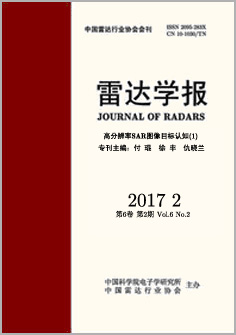

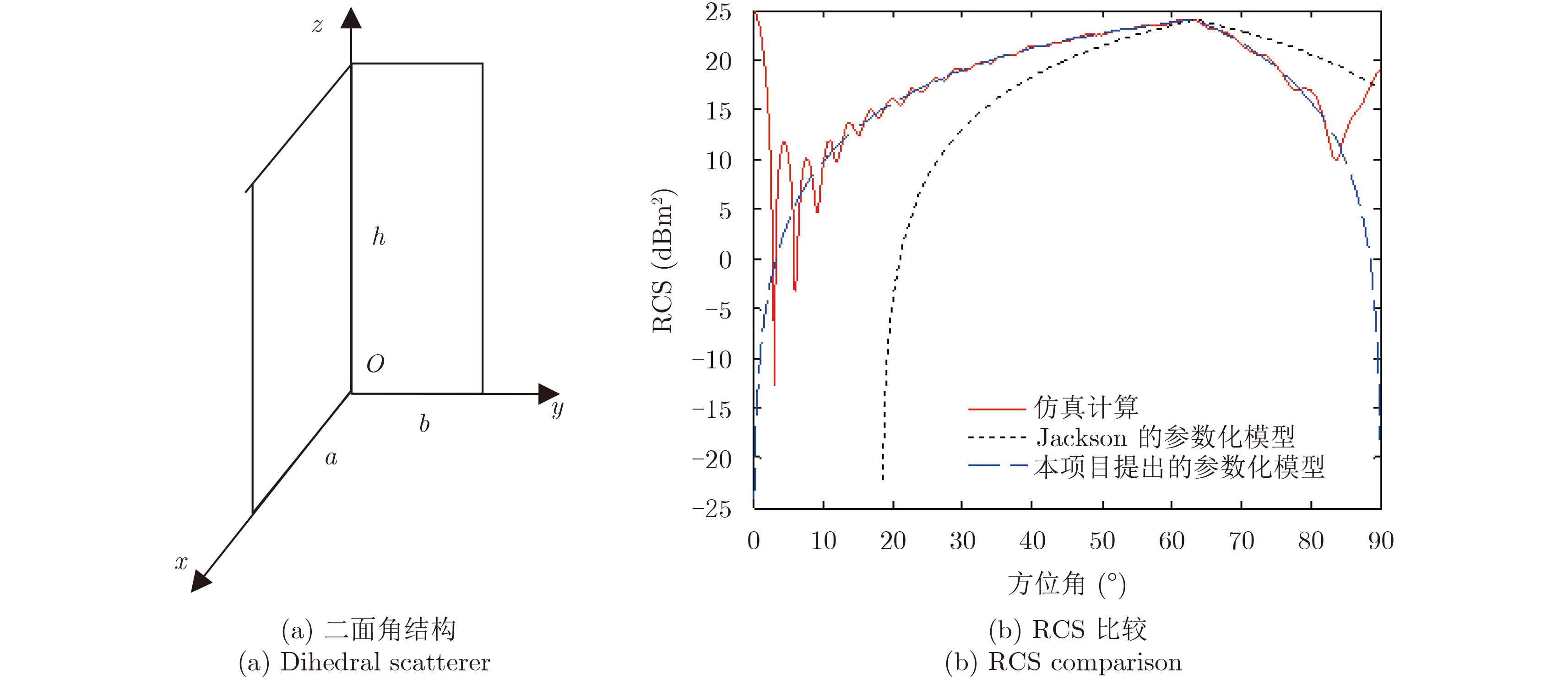



 DownLoad:
DownLoad:

